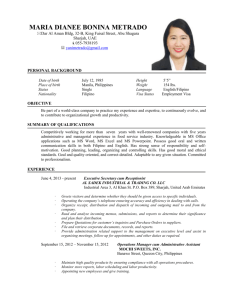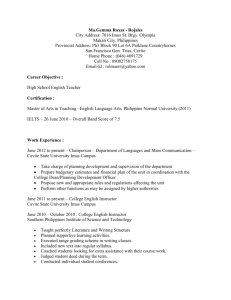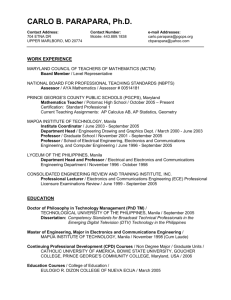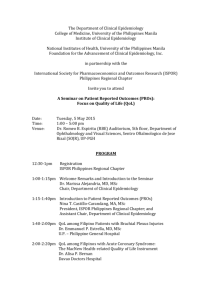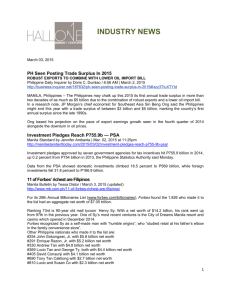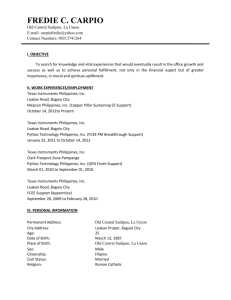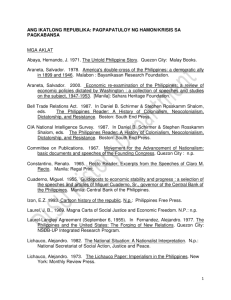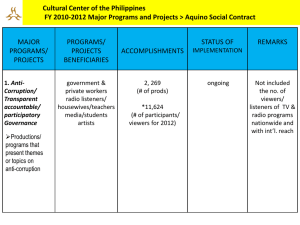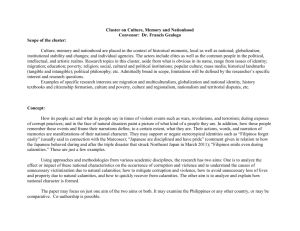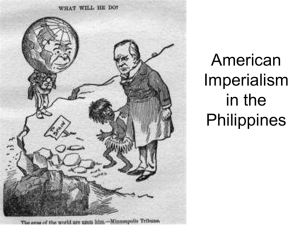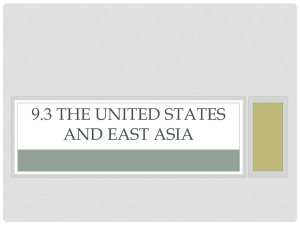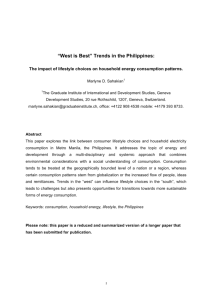Power Point Presentation with Audio
advertisement
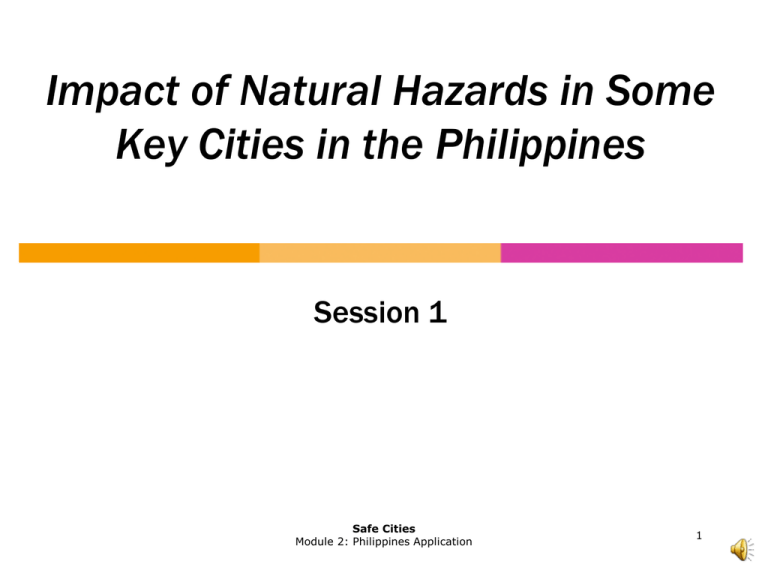
Impact of Natural Hazards in Some Key Cities in the Philippines Session 1 Safe Cities Module 2: Philippines Application 1 Background The Philippine archipelago has a total land area of 115,800 square kilometers It has 115 cities and 1,496 municipalities Metro Manila is the seat of Philippine Government and is composed of 15 cities Safe Cities Module 2: Philippines Application 2 Hazards An average of 22 typhoons enter the Philippine Area of Responsibility each year, and 5 of which may be destructive About 5 earthquakes a day are felt in the country. That is about 1,825 quakes a year! From 1999 to 2003, 39 weather disturbances were experienced by the country Safe Cities Module 2: Philippines Application 3 CAMANAVA CAMANAVA stands for Caloocan City, Malabon City, Navotas City and Valenzuela City These areas are high prone to flooding and flashfloods due to its topographical location and rapid urbanization Safe Cities Module 2: Philippines Application 4 Marikina City Marikina City is located along the valley in eastern Metro Manila. It is composed of 14 barangays, 12 of which lie along the Marikina River. Marikina River is a tributary of the Pasig River Marikina City’s population is approximately 480,000 to 500,000 Safe Cities Module 2: Philippines Application 5 Baguio City Baguio City is located at the Cordillera Autonomous Region (CAR). It is prone to soil erosions, landslides and earthquakes. 16 July 1990 Earthquake in Baguio City 401 dead 1,103 injured 223 missing 3,668 families rendered homeless Safe Cities Module 2: Philippines Application 6 Other Key Cities Prone to Natural Hazards Ormoc City (Region VIII) Flooding and Flashfloods Dagupan City (Region I) Flooding Cabanatuan City (Region III) Liquefaction Butuan City (CARAGA) Flooding Safe Cities Module 2: Philippines Application 7 Urban Growth Urban Growth has aggravated the effects of natural hazards in previous years Metro Manila’s population is about 10.5 million Population Annual Growth Rate City of Manila is 3.6% Quezon City is 4% Caloocan City is 3.5% Safe Cities Module 2: Philippines Application 8 Rapid Urbanization Rural – urban migrants has boosted the percentage of squatters in Metro Manila. In 1980, National Housing Authority reported that one out of four Metro Manila resident is a squatter. Rapid urban growth paved way for these informal settlers to build houses along the river banks and coastal areas. Rapid Urbanization has tremendously aggravated the effects of natural hazards Safe Cities Module 2: Philippines Application 9 Payatas Dump Site Tragedy This tragedy is dubbed as “trashslide” or “garbalanche” and happened only in the Philippines. This is a concrete picture of the hazard incurred due to urban migrants. This tragedy resulted to 224 deaths and 38 missing persons. Safe Cities Module 2: Philippines Application 10
